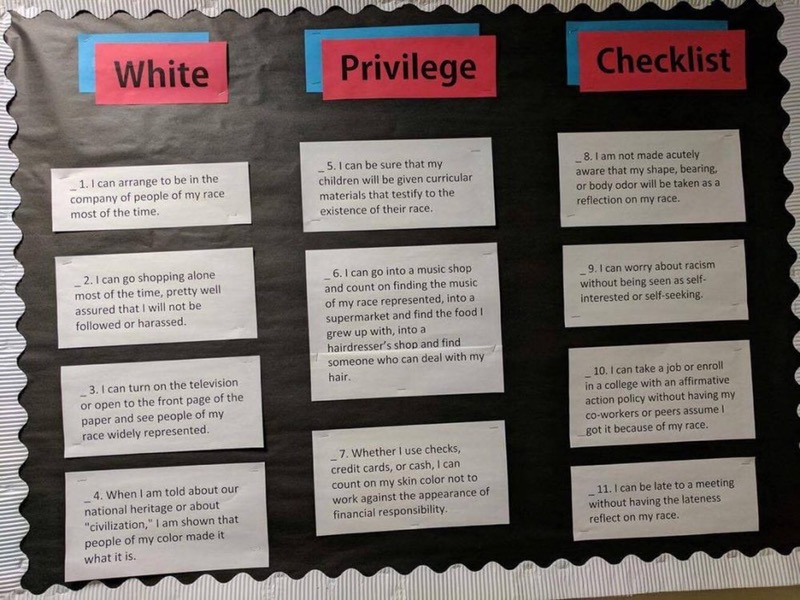“White Privilege” Checklist on Display in U of MN Residence Hall
Students at the University of Minnesota can now determine whether or not they have “white privilege.”
A display board with an 11-point checklist to identify “white privilege” was found hanging in a U of MN’s residence hall. Evan Christenson, a current student at the university and a self-declared liberal, photographed the board and told Campus Reform the display “crosses the line” and proves there’s a “double standard” concerning free speech on campus.
“When it attacks the individual and not the idea, there is a problem,” Christenson said.
“I believe there needs to be dialogue on the subject but it needs to be more of a give and take and not a one-sided affair.”
Here are the 11 statements on display that indicate “white privilege.”
I can arrange to be in the company of people of my race most of the time.
I can go shopping alone most of the time, pretty well assured that I will not be followed or harassed.
I can turn on the television or open to the front page of the paper and see people of my race widely represented.
When I am told about our national heritage or about “civilization,” I am shown that people of my color made it what it is.
I can be sure that my children will be given curricular materials that testify to the existence of their race.
I can go into a music shop and count on finding the music of my race represented, into a supermarket and find the food I grew up with, into a hairdresser’s shop and find someone who can deal with my hair.
Whether I use checks, credit cards, or cash, I can count on my skin color not to work against the appearance of financial responsibility.
I am not made acutely aware that my shape, bearing, or body odor will be taken as a reflection on my race.
I can worry about racism without being seen as self-interested or self-seeking.
I can take a job or enroll in a college with an affirmative action policy without having my co-workers or peers assume I got it because of my race.
I can be late to a meeting without having the lateness reflect on my race.

*These statements are from a list of 46 privileges published in 1988 by Peggy McIntosh.
So, what is the purpose of displaying this “white privilege” checklist? Is it to make students “feel bad” about being white? Is it to shame students for having no control over the color of skin they were born with? White guilt, perhaps?
The U of MN’s statement to CBS says the display is to help students “think about how racial difference might uniquely impact individuals.” As if they aren’t already constantly reminded to think about race.
Yes, the display is on a bulletin board within the Yudof residence hall.
Housing & Residential Life staff use bulletin boards to update residents about campus events, engage the community around shared interests, and to provide information that promotes student learning, engagement, well being, and academic success. Bulletin board topics can include study skills, time management, eating healthy, getting involved on campus, how individual differences play out on campus and in the community, and information about campus resources and services. Housing & Residential Life’s goal is to promote and support the success of all of our students.
The bulletin board in question was posted to help students understand how identity based difference plays out in communities. In this case, it helps people think about how racial difference might uniquely impact individuals based on various settings and circumstances. Much of the content from the board was taken from the work of Peggy McIntosh, a women’s studies scholar from Wellesly. We will make ourselves available to meet with students who feel impacted by the bulletin board and will provide additional resources as needed.
The Campus Reform article was the first time it was brought to our attention, and while coverage has led to a minimal amount of questions, we have not received any formal complaints.
Targeting one race and victimizing the other will not result in meaningful discussions on controversial topics.